Math and Science Investigations (M.S.I.) is a building program I have been doing in Kindergarten since I started my career. I first learned about it during one of my practicums in a Kindergarten class when I was in teacher’s college. Essentially, M.S.I. is an inquiry-based program that uses building materials to encourage the development of math and science concepts, creativity, problem-solving, perseverance, planning, and much, much, more. My original resource for M.S.I (a worn photocopy from a book that used to exist somewhere in the board) is long since lost; however, I found a great replacement in the book Building Structures With Young Children by Ingrid Chalufour and Karen Worth:
Basically, M.S.I. goes something like this:
1) I teach a mini lesson on the day’s focus.
2) Each student gets their own bin of building materials (blocks, connectors, cups, etc.) and takes it to a table. The bin goes on the chair and the children stand at the table and build. I circulate and facilitate discussion, pose questions, take notes, take photographs.
3) Reflection. I post pictures of interesting structures for discussion and feedback.
We engage in M.S.I. as an entire class, one period per week. That being said, the building bins are always available during discovery time and it is common to find children selecting them to continue working on an inquiry we are engaged in. We also often find ourselves setting up provocations that support the learning that is happening in M.S.I., due to significant student interest.
Here are a few questions I often get about M.S.I:
Q: What kind of materials do you use? How do you organize enough bins for each child to have one?
A: We use a variety of store-bought traditional building blocks and some found materials to make up our bins. Wooden blocks, tree blocks, better blocks (kind of like Duplo), foam blocks, cups (laundry caps) from the recycling depot, anything that will stack! I purchased some materials from school catalogues, found others at garage sales and recycling stores, and got some for free from the recycling depot in our school board. Anything that can stack reasonably well is a good material for M.S.I. If you don’t have enough for everyone in your class you could always run the program with children working in partners or groups, and we sometimes do this as well depending on the focus of the lesson.
Q: What about space? Where do you store your materials? What if you don’t have enough table space for each student?
If you don’t have enough table space for each student to have their own spot, children can build on the floor. The idea behind standing and building at a table is that children are initially encouraged to build up with their materials. Standing helps the children stack their blocks more easily, and see their structure from all sides. Placing the building bin on a chair frees up table space for working. We store our building materials in two large rolling shelves. The shelves hold about 36 bins. I have a small space, but it’s not overwhelming in the classroom. I saw another school where the three kindergarten classes shared their M.S.I materials on a rolling cart that was parked in the hallway and could be easily moved to each class.
Q: What kinds of inquiries have you done? How long does one inquiry last?
A: The resource Building Structures With Young Children focuses on two inquiries: Towers and Enclosures. This year we have completed a Tower Inquiry (which I will write more about soon) and are now working on enclosures. We have also done inquiries on bridges and castles. In one school year, we usually have time to complete at least 2 large structure inquiries through M.S.I.
Q: How is M.S.I introduced? What does it look like at the beginning of the year?
A: At the beginning of the year, M.S.I. time is mainly spent establishing routines and working on basic concepts of space, balance, making a plan, etc. There is a lot to be said just for helping the children locate a bin, find their own work space, build, and then tidy up. A lot of time also goes into establishing routines and expectations for sharing and reflecting on our structures at the end of the lesson. The most important part of the initial phase of M.S.I. is exploration and helping the children stay focused on solving problems rather than getting frustrated if/when their structure falls down. The children are often encouraged to choose different bins regularly to get a feel for the variety of materials we have available.
I have to say, the children are always excited to see M.S.I. on the schedule. I continue to be amazed at how reflective and thoughtful they are about their structures and how mature they appear when giving feedback and suggestions to their classmates during reflection time. Although when I started teaching I successfully ran an M.S.I. program without a lot of fancy technology (none, actually), the access we now have to iPads, a classroom camera, and an interactive SMARTBoard have helped me take our building program to a whole new level. Being able to take a photo of a child’s structure and immediately post it on the SMARTboard for us to discuss is an invaluable part of the program. We regularly use the SMARTBoard pens to label the structure in the photo, highlight shapes in the design of the structure or draw on possible ideas to add next time.
If you have any other questions about how M.S.I. works, please don’t hesitate to drop me a line!

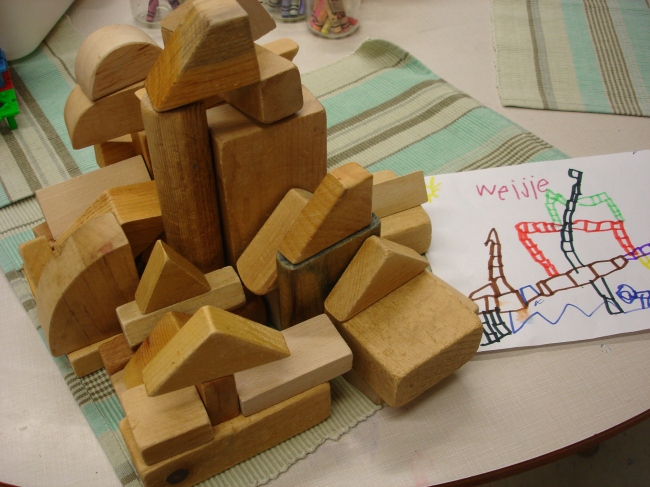
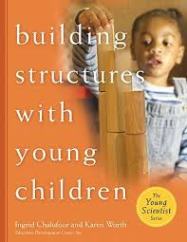
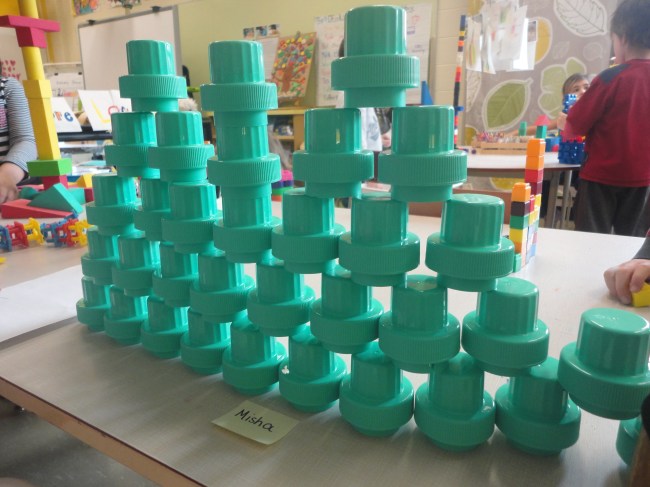
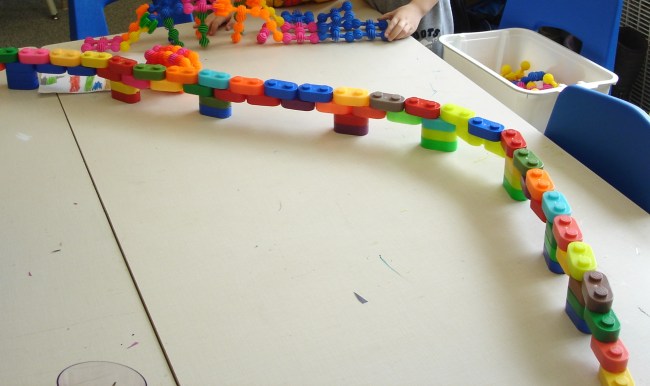
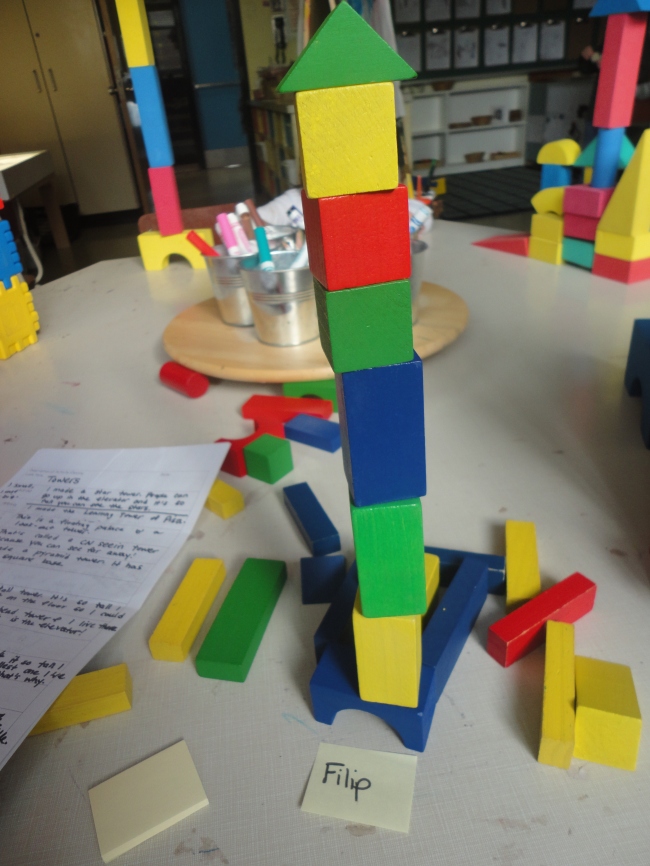
Pingback: Tower Inquiry | The Curious Kindergarten
Pingback: Planning for a Full Day of Inquiry-Based Learning | The Curious Kindergarten
Pingback: Enclosures Inquiry: A House for Snuffles | The Curious Kindergarten
Amazing information and lesson format! Do you feel that this could work with older children too (I am teaching first grade so they’re 6/7.)
Thank you Erica! Math science Investigations would absolutely be appropriate for older children. I could see a lot more investigation/research possibilities, team/group work, etc.
Hi…I am excited to have found your site. I have wanted to be a teacher of this kind of program for a long time. Now I feel as though I am not alone.
Thank you Sandra! Welcome! 🙂
During M/S I, do the children build anything they want to, or do they build something specific (based on your lesson or the topic you are focused on)?
Hi! Great question! When I am launching MSI, the children build whatever they want to. When we are engaged in a specific inquiry project, they build according to the lesson of the day (e.g., during our tower inquiry the children worked on towers for several weeks during MSI). When an inquiry ends, I often encourage the children to build freely just to get ideas from their interests.
Thanks for your response! One more question; other than Building Structures With Young Children, are there any other resources you would recommend for supporting an MS/I program? Thank you!
I simply loved you blog and ideas… I have a question concerning the M.S.I. Do you always let the children plan first, or do they go straight to working with the materials and later on they plan (draw their plans).?
Tks a million for sharing.
Hi Andrea! I don’t actually have the kids make a plan each time. Usually I do a mini lesson and the exploration time is just the building time. We often leave recording or planning until later in a project when the children have a better idea of what they need to accomplish or include in their structures. For drawing, it is much easier for children of this age to draw/record a picture of something they have already built than it is for them to draw a plan first. Usually our projects at the beginning of the year involve the kids drawing their completed structure. Projects later in the year involve more pre-build drawing. Hope this helps!
Thank you for sharing your ideas! Very helpful and I will certainly be looking for the book you suggested….I was wondering how you transfer the photos to the smartboard that quickly….is there a program you use?
Celia
Hi Celia! I do it a few different ways. One way is to use a camera with an SD card and stick the card into your laptop while the kids are tidying up. If you are using an iPad or smart phone to take pictures, I recommend using an App like SeeSaw. Whatever photos you load into your timeline are accessible on all your tech objects immediately. So I’ll take a photo in SeeSaw with my phone and then open SeeSaw on my laptop’s browser and it will be right there. Hope that helps!
Thank you so much!! I will try it!!
Thank you for sharing! I have begun an M.S.I. period in my class as well this year. I don’t have nearly as many interesting things to build with as you do, but the collection will grow eventually! I already love to visit my local ReStore for loose parts so I will have to keep an eye out for more items for MSI. I have a couple of questions for you. What is the time frame that a period of MSI operates in? How long do the children build for? Also, do the children work with partners ever? or is it more solitary building. Many of my students gravitate to working with someone else – lots of great collaboration happens during this time. Thanks again for sharing your fabulous practice!
If the whole class is building at the same time, what do the children do when they are finished investigating at different times, get off task or simply do not want to build structures at that specific time? Would M.S.I. still work the same, in your opinion, if it was invitational for smaller groups I wonder? When it’s sharing time do you call the whole class to the carpet and leave structures where they are, share, and then go back and tidy up all together?
At the beginning of the year I set the building time to be quite short (10 minutes max) so I don’t find that children “finish building” and have nothing to do. We also encourage children to use all the blocks in their bin; so if a child stacks 5 blocks and says “I’m done” we encourage them to keep going by adding more blocks from their bin. Some children don’t like building alone and are more successful when they have a partner or a teacher to work with; we always accommodate that when we can. I think the smaller group structure you mentioned can work and does work often (I mentioned how we will extend the inquiries we are working on in MSI by setting up provocations during centre time). Personally, I find having everyone do it at the same time creates an environment of excitement and helps children extend their thinking because they are getting inspiration from their classmates (by watching what others are doing and by hearing what they’re saying at reflection time). When we reflect, the reflection is richer because every child has a context in their mind for what we’re talking about, because they all just experienced it.
Before we tidy up, we often do a “gallery walk” so everyone’s work can be showcased (the children are asked to walk around the room and look at what their classmates have created. Then we tidy up). I photograph everyone’s work and we select some to share at the carpet for our reflection discussion.
Pingback: Kindergarten in the Time of Covid-19 | The Curious Kindergarten
Can you give me an example of a mini-lesson that would be taught prior to building?
( I am assuming whatever math strand you are working on?) I apologize for the ridiculous questions.
Thanks for sharing all your wonderful, thoughtful strategies
A mini lesson would connect to whatever topic we are working on. For example, if we are working on towers, the mini lesson could be an examination of towers from around the word: noticing the structure, what is special about them, etc. Or it could be about a challenge we experienced last time. For example, if towers were collapsing all over the place we would talk about what a tower needs to stand tall and sturdy (a strong base). The goal of the mini lesson is just to help the children get their “minds on” whatever the challenge is – to think about what they’ve learned so far and to introduce new thinking to push them forward. I hope that helps.
*around the world
Pingback: 344: Play as a catalyst for innovation – The Thinking Stick
Pingback: 344: Play as a catalyst for innovation – SOS